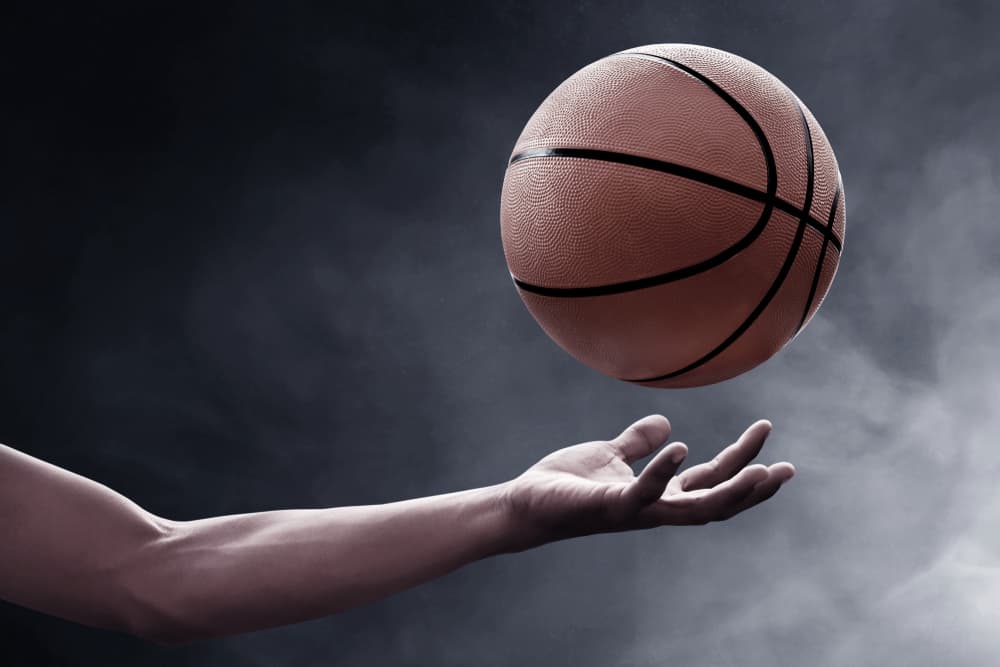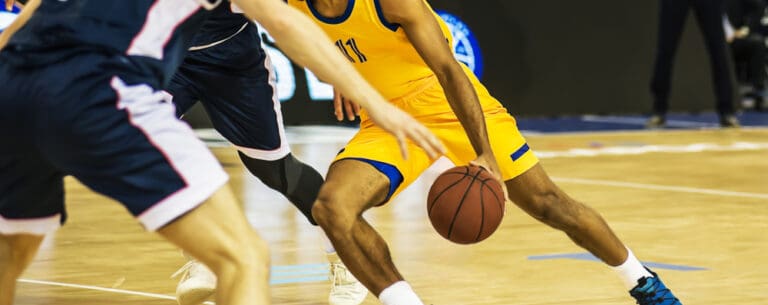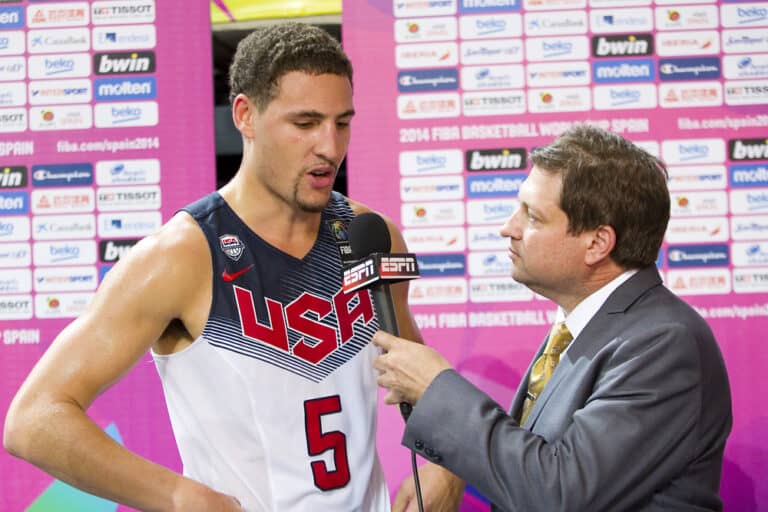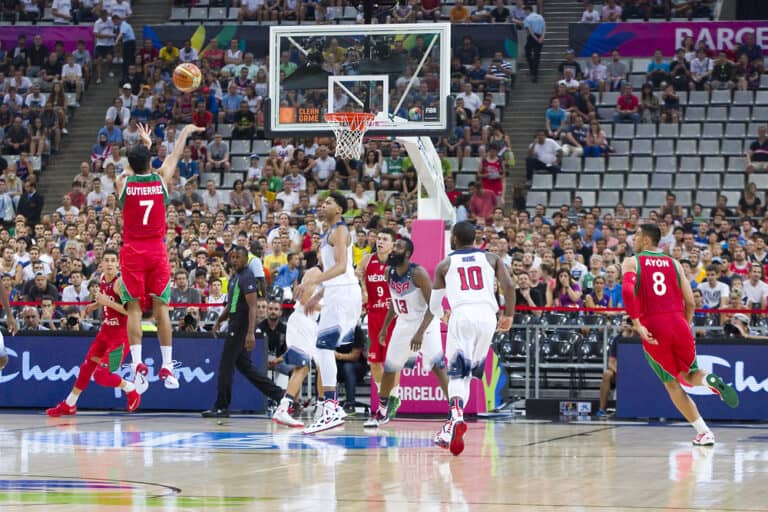How Much Does A Basketball Weigh? (We Find Out)
You must choose the right basketball size to become a great ball player. Practicing with a smaller ball may prevent you from developing the muscle memory you’ll need on the court. So, how much does a basketball weigh?
The average basketball weighs 22 oz. Amateur and professional athletes play with a size 7 ball that weighs that much and has a circumference of 29.5 inches. Choosing any other size may hinder an athlete from developing the skills they need when it’s time to play with their teammates.
However, there’s much more to a basketball than weight alone. You have to consider other factors and ponder whether you should let kids play with the same basketballs adults use. First, you should learn what’s the right size for a basketball.
What’s The Right Size For A Basketball?
An average basketball should be close to 30 inches wide and weigh around 22 oz. Keep in mind there are different basketball sizes, and these two measurements only apply to basketballs used in adult games.
The NBA uses basketballs that follow these two requirements. There’s a third criterion to meet, which is how much air pressure the ball should have.
How Much Does A Basketball Weigh Without Air?
A deflated basketball weighs 22 oz. You won’t notice that much difference when you pump air into a ball because air has little mass. You can see it for yourself. Deflate your ball, weigh it, inflate it, and weigh it again. You’ll see little difference in weight!
However, you may confuse how much a ball weighs with its pressure. You can measure air pressure in pounds per square inch, and your average ball should have 7.5 to 8.5 PSI of air pressure.
Nevertheless, that doesn’t mean your ball will weigh between 7.5 to 8.5 pounds!
Does The Size Of A Basketball Matter?
Absolutely! You can choose seven different sizes when picking a basketball, and how you play will change a lot depending on the one you get. Most adults play with a size 7 ball, and you’ll probably want to buy that one if you’re learning to play basketball.
There’s a huge difference between a size 1 and a size 7 basketball. A size 1 is 16 inches wide and weighs 8 ounces. In contrast, a size 7 is 29.5 inches wide and weighs 22 ounces, making it almost twice as big and nearly three times as heavy as the smallest ball.
Can You Play With A Smaller Basketball?
That depends on what you’re using that basketball for! Using a small basketball will not help to improve your skills. At the same time, most people won’t want to play serious games using a small ball.
Most people won’t care about the basketball size if you have a friendly game in your backyard. However, when playing competitive games (even amongst amateur players), most people will agree they prefer a high-quality size 7 basketball to play with.
There’s a reason for that! The degree of difficulty changes a lot when you use a smaller basketball.
Is It Easier To Shoot With A Small Basketball?
You’ll have an easier time shooting a small basketball, but in turn, you’ll have a hard time later on shooting when you use a size 7 ball if you get used to smaller basketballs.
More importantly, you want to develop good muscle memory, so you don’t have to think when shooting on the court. Using a small ball will prevent that from happening.
You’ll have a hard time shooting a regular basketball when you get used to the size and weight of a small basketball.
How Do I Choose A Basketball For Kids?
The basketball size you need for your kids depends on how old your children are. A size 5 is perfect for everyone aged 8 and under, a size 6 is the go-to choice for anyone between 9 and 11 years old, and everyone aged 12 and over should use a size 7 basketball.
Why do basketball sizes matter? Because the bigger the size, the heavier your basketball will be! It’ll be hard for a six-year-old to dribble using the same ball a grown adult uses.
If you try to give a six-year-old a size 7 basketball, it may be too heavy for them to hold.
Which Basketball Is Best For Beginners?
The best basketball for beginners is the one you can get your hands on. If you barely know how to dribble or shoot a three-pointer, it’d be better to practice with whatever you can get and worry about buying a ball later.
Of course, you should do so with a basketball! Don’t try to play with a ball from another sport, as you need your ball to bounce around to learn the basics properly.
At the same time, we highly recommend you wait until you get the same ball pro athletes dribble. NBA basketballs are great, but beginners may have a hard time with them as they feel heavier than the average ball.
Are NBA Balls Heavier?
Most size 7 basketballs weigh the same, but NBA balls feel different to the touch. These professional-grade basketballs are made with genuine leather and have no added chemicals. Plus, they take a long time to be broken in, so it’s not the same as your average ball.
Remember, there are different basketball sizes! If you compare two ball sizes, you’ll realize one weighs more than the other. However, when you compare two balls of the same size, you won’t see much weight difference.
However, some basketballs feel different to the touch, which may trick you into believing some are heavier than others. In that case, an NBA ball will feel heavier but probably won’t be (as long as both have the same amount of air inside).
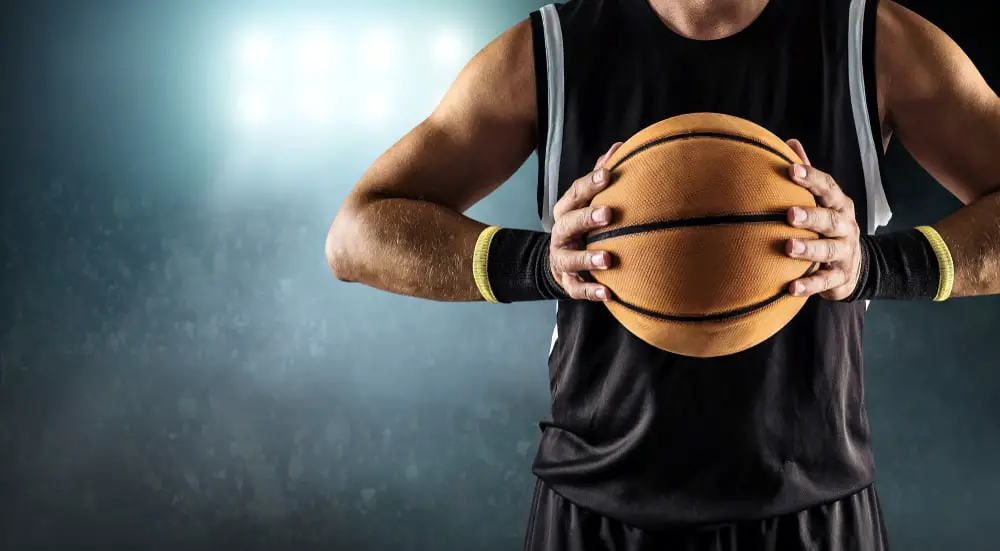
How Much Does An NBA Basketball Cost?
An NBA basketball costs close to $200, and while that may seem a little steep for a basketball, you’d be happy to know you’re putting money down to buy the same ball professional athletes use during a game.
At the same time, you’ll have to go through the same process that teams go when they get a new basketball. In other words, you’ll have to take the time to make the hard leather soften a bit by using it.
You don’t need an expensive ball to have a good time on the court. You can get great basketballs for at least half the price, sometimes for a tenth of what an NBA ball costs!
Does The NBA Use New Balls For Every Game?
Not at all! Each team gets 72 balls at the beginning of the season, and they use those basketballs throughout the year. Sometimes, they give one or two away to an athlete or a fan, but teams will often reuse balls that are up to code.
It takes a long time to break in a basketball. Sometimes, it takes up to a month. For that reason, it’s almost impossible to use a brand-new basketball in every game.
In fact, it’d be lying to call them brand-new since athletes use these balls in practice before using them in a game.
Do NBA Basketballs Get Reused?
Teams reuse NBA balls if they pass an inspection after each game. The NBA has a long list of requirements for a ball to make it to the court, and they make sure every ball meets every requirement before that happens, no matter how many times they have to check.
Before players can bounce a ball on the court, the NBA checks for tears, pressure, and a few more things. If everything is up to code, players will use that basketball. However, there are two backup balls if something goes wrong with the first one.
Balls may go to a fan or an athlete after a game. Players may ask to take the ball home if they had a great game, and sometimes, fans may be lucky enough to bring an official basketball home.
Are NBA Balls Broken In?
Absolutely! It’s a must for teams to break in their basketballs before official games. Amateur players and basketball enthusiasts should take their time to break their brand-new NBA basketballs too.
What’s the best way to break in an NBA ball? Using it! You have to dribble every day until your basketball feels normal to the touch. Sure, it’ll be annoying at first, but you’ll soon see progress and have the perfect basketball.
It’ll take you three weeks of work to make that happen, and until then, the ball will feel awkward to hold and dribble. Every NBA team does that to break in their basketballs. Players use them in training for a few weeks before they meet the criteria for an official game.
Conclusion
The average size 7 basketball weighs 22 oz. There are little to no changes in weight, whether the balls are inflated or deflated. However, it’s important to note there are several basketball sizes, with size 7 being the biggest and most common.

